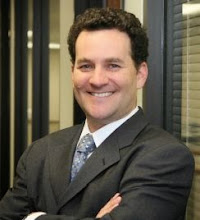In a sharply divided 6-5 decision that conflicts with many decisions of this Court and other circuits, the en banc Ninth Circuit affirmed the certification of the largest employment class action in history. This nationwide class includes every woman employed for any period of time over the past decade, in any of Wal-Mart’s approximately 3,400 separately managed stores, 41 regions, and 400 districts, and who held positions in any of approximately 53 departments and 170 different job classifications. The millions of class members collectively seek billions of dollars in monetary relief under Title VII of the Civil Rights Act of 1964, claiming that tens of thousands of Wal-Mart managers inflicted monetary injury on each and every individual class member in the same manner by intentionally discriminating against them because of their sex, in violation of the company’s express anti-discrimination policy.
The questions presented are:
I. Whether claims for monetary relief can be certified under Federal Rule of Civil Procedure 23(b)(2)—which by its terms is limited to injunctive or corresponding declaratory relief—and, if so, under what circumstances.
II. Whether the certification order conforms to the requirements of Title VII, the Due Process Clause, the Seventh Amendment, the Rules Enabling Act, and Federal Rule of Civil Procedure 23.
Wal-Mart makes two primary arguments.
First, Wal-Mart argues that the Court should grant review on application of Rule 23(b)(2) in cases seeking monetary relief. Wal-Mart argues that Dukes creates a three-way split among the circuits: the "majority" view, enunciated in Allison v. Citgo Petroleum Corp., 151 F.3d 402, 415 (5th Cir. 1998), which allows certification of monetary claims that are merely incidental to the injunctive or declaratory relief sought; a "minority" view, adopted in Robinson v. Metro-North Commuter R.R. Co., 267 F.3d 147, 164 (2d Cir. 2001) and Molski v. Gleich, 318 F.3d 937, 949–50 (9th Cir. 2003), which holds that the plaintiffs' intent in filing the action controls; and Dukes, which Wal-Mart argues "looked not to the language of Rule 23(b)(2) itself, but instead to what it described as the 'advisory committee requirement' that 'the appropriate final relief' not relate 'exclusively or predominantly to money damages.'" Wal-Mart argues that all three approaches are wrong (with Dukes as the worst of the three), and claims for monetary relief may proceed only under Rule 23(b)(3).
Second, Wal-Mart argues that Dukes "creates or exacerbates numerous additional conflicts concerning Rule 23, Title VII, the Due Process Clause, the Seventh Amendment, and the Rules Enabling Act." In Wal-Mart's view, Dukes improperly subjects the requirements of substantive law to the class action device. Under this rubric, Wal-Mart argues that Dukes exacerbates a Circuit split by relieving the plaintiffs of their burden of coming forward with "significant proof" that Wal-Mart "operated under a general policy of discrimination.” Gen. Tel. Co. of the Sw. v. Falcon, 457 U.S. 147, 159 n.15 (1982). Further, Wal-Mart argues that the decision stripped it of its statutory and Due Process right “to demonstrate that [each] individual . . . was denied an employment opportunity for lawful reasons.” Int’l Bhd. of Teamsters v. United States, 431 U.S. 324, 362 (1977).
Responsive papers are due September 24, 2010. The Supreme Court's docket is here.






No comments:
Post a Comment
Note: Only a member of this blog may post a comment.